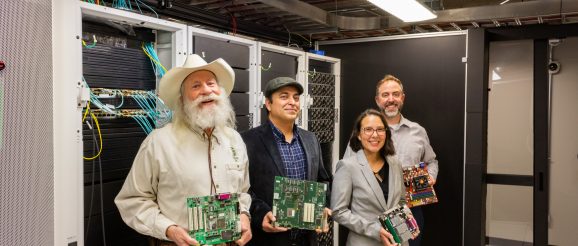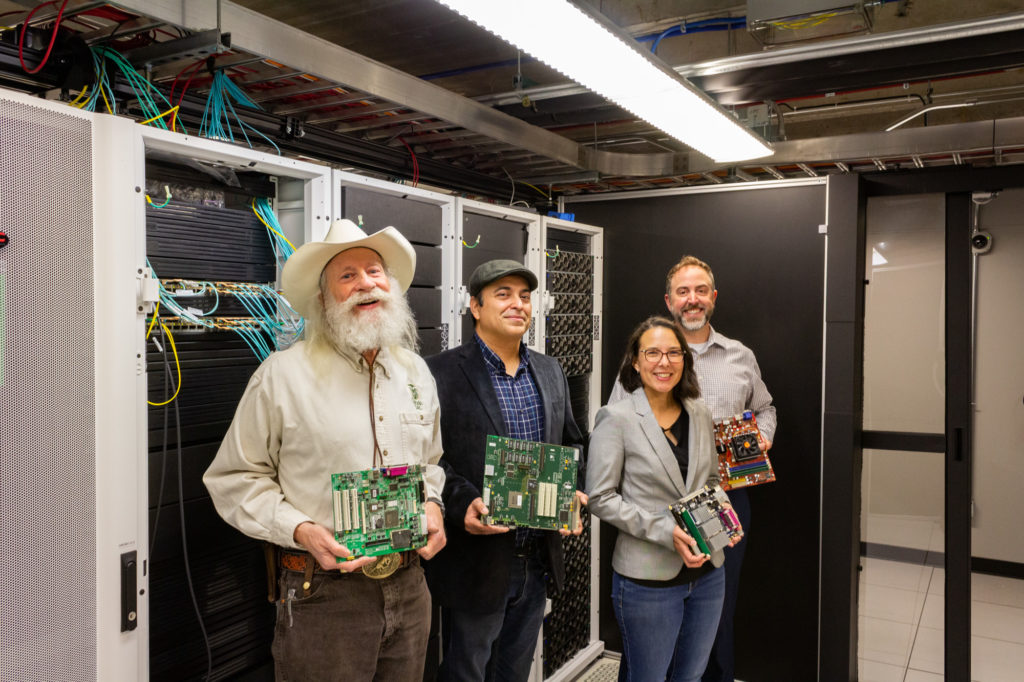Powering innovation: Colorado State University lands grant to expand cyberinfrastructure, boost research


In our hyper-connected world, it takes creativity, curiosity and passion to fuel innovation – and a whole lot of computing power.
A multifaceted team at Colorado State University has secured support from the National Science Foundation for a new high-performance computing (HPC) cyberinfrastructure to amplify research across campus.
The cross-institutional collaboration is led by Electrical and Computer Engineering Professor Sudeep Pasricha, an international thought leader recognized for helping propel the digital age.
“We need massive amounts of computing resources to solve complex societal issues and accelerate emerging technologies,” said Pasricha. “This acquisition will help us do science better.”
Available to CSU researchers at no cost, the new cyberinfrastructure will provide critical computing support for projects ranging from climate change modeling to next-generation solar cell design to genome characterization.
“This grant is a great example of a tremendous partnership between CSU and our counterparts from CU-Boulder,” said Brandon Bernier, vice president of Information Technology at CSU and a co-investigator on the project. “By working and investing together, we’ve been able to do more collectively for the advancement of high-performance computing than any of us would be able to do alone.”
Increasing access to supercomputing
The planned upgrade to the University’s computational capacity is the result of a decades-long collaboration between CSU and CU to increase access to supercomputing and bolster innovation. The new computing resources will be housed at CU-Boulder as part of its next generation HPC system called Alpine.
The system will enable lightning-fast performance through of a multitude of new compute nodes – powerful computers incorporated into a set of enclosures that house parallel processors, memory, graphic processing units, and cooling equipment.
CSU researchers can access these advanced computing capabilities through a fiber connection that will allow them to access the Alpine system as if housed locally. The cyberinfrastructure is also accessible to CSU-Pueblo and members of the Rocky Mountain Advanced Computing Consortium – a group of universities and research centers spanning nine states, including under-represented, under-served populations and rural communities.
“One of our major goals is to increase access to this resource for researchers who have been historically underrepresented in computing and data science,” said Erin Nishimura, assistant professor of Biochemistry and Molecular Biology, who leads research in developmental biology and genomics and is a co-investigator on the grant. “We aim to lower barriers and foster a more welcoming culture through our education and outreach efforts.”
Building on longstanding efforts
Pasricha assembled a seasoned team of leaders to represent the diversity of constituents who will benefit from the $400,000 NSF grant and matching funds from CSU.
The project builds on previous efforts led by CSU’s Information Science and Technology Center, or ISTeC, to provide high-performance computing for researchers across disciplines. In addition to Nishimura and Bernier, Emeritus Professor of Electrical and Computer Engineering H.J. Siegel is a co-investigator on the project and serves as chair of the management and allocations committee for the new high-performance computational infrastructure. He was also the founding director of ISTeC. The co-principal investigator at CU-Boulder is Shelley Knuth, director and assistant vice chancellor of Research Computing.
“Some of the world’s most groundbreaking discoveries are driven by high-performance computing systems,” said Pasricha. “Making this system available to our researchers is a necessary step toward advancing science and technology at CSU.”
The post Powering innovation: Colorado State University lands grant to expand cyberinfrastructure, boost research appeared first on Walter Scott, Jr. College of Engineering.
